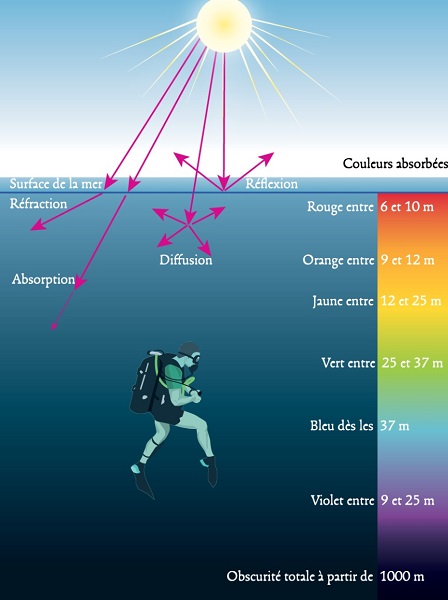Impact of light pollution on aquatic organisms
PDFToday, more than half of the world’s population lives within 100 km of each other from coast to coast and half live near lakes or rivers. As a result, aquatic environments are exposed to artificial light from urban areas, leisure complexes, shops and industries [1],[2].

In addition, the life of many aquatic species is linked to light intensity. In radiated fin fish, feeding, schooling and migration depend on specific light intensities. Changing these intensities can therefore change the behaviour of individuals. Zooplankton is also a striking example. Like many aquatic invertebrates, zooplankton move vertically in the water column during the day. This is the daily vertical migration. The plankton zoo avoids surface predators during the day and feeds on surface phytoplankton at night. However, in the presence of light pollution, the illumination of the environment remains important at night and during the day. Under these conditions, the number of zooplankton individuals to migrate and the amplitude of vertical migration decrease, leading to a proliferation of microalgae on the water surface. In the long term, these changes could have repercussions on the balance of aquatic ecosystems: changes in prey/predator relationships, impact on food chains and water quality [1],[2],[3].
References and notes
[1] Depledge M.H., Godard-Codding C.A.J. & Bowen R.E. (2010) Light pollution in the sea. Marine Pollution Bulletin 60, 1383-1385.
[2] Rich C. & Longcore T. (2006) Ecological consequences of artificial night lighting. Island Press.
[3] Perkin E.K., Hölker F., Richardson J.S., Sadler J.P., Wolter C.& Tockner K. (2011) The influence of artificial light on stream and riparian ecosystems: questions, challenges, and perspectives. Ecosphere 2, 1-16.
[4] Le Tallec T. (2013) Lumière, vision et horloge biologique. Espèces 9, 12-21. (in french)




